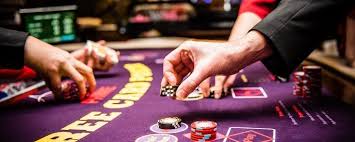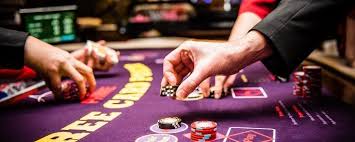
Card counting is the primary way advanced blackjack players are able to beat casinos at live blackjack tables. That is to say, it’s not that they beat the house all the time, but it helps to swing the advantage more in the player’s favor, allowing them to win more. You should know that the house will always hold a little bit of an advantage, or else they wouldn’t be able to stay in business. However, you must also realize, card counting does not work for online play.
Card counting is not illegal, just frowned upon by casinos. With blackjack already having the best player odds of any casino game, having the know-how to cut that advantage even more is something the casinos don’t like.
As a card counter, you will know when to bet more because the deck is favorable, or when to stick to the table minimum bet because the deck is unfavorable. If you can count cards, you will know the probable composition of the deck and therefore know when a typically unconventional bet, might actually be a good bet.
BASICS
The basic theory behind card counting is to track the relationship of high cards to low cards remaining in a deck of cards. Through statistical studies, it has been determined that when more high cards remain in the deck, (10’s – Aces) it benefits the player, and when more low cards remain in the deck, (3’s-6’s) it benefits the dealer. Therefore, a high positive count is the ideal situation you hope for as a card counter.
With more high cards remaining, the player benefits for the following reasons:
- There is a better chance to hit a natural blackjack, which generally pays 3:2 and therefore more money is won.
- You will be more likely to get a high card when doubling down and therefore winning, which means more profit on a single hand.
- Gives yourself more opportunities to profitably split cards because you’ll know the odds are greater that you’ll get a high card and a better chance to win the hand
- Let’s you know when taking the insurance bet (a basic strategy no-no) may be a good thing because the dealer has a better chance of having blackjack if the deck is high card rich.
- Knowing the deck has more high cards, makes it more probable for the player and the dealer to bust. As a player using basic strategy, when you know you should hit a hard 16, you might not want to hit it because of the probability of receiving a high card and busting. You would want to stand and let the dealer take that high bust card because he must hit a 16.
SYSTEM SETUP
Card counting systems assign numerical values to each card in the deck, either positive, negative, or zero(0). When the count is a high positive number, it means the deck has more high cards, than low cards left and that is more favorable to the player.
As cards are dealt, you adjust the running count by the value of that dealt card. If it’s a high card, you’re going to subtract from the count, because now there would be more low cards, than high cards in the deck, and if it’s a low card, you’re going to add to the count, for the opposite reasoning.
Cards are a given a value based on the card’s EOR, or Effect of Removal. The EOR is basically an estimate of how removing a card from play will change the house advantage in the game. Furthermore, the bigger the spread between the negative values and positive values, the better match to actual EOR, resulting in better efficiency of the system.
Finally, systems are also broken into different class levels based on the ratio between the lowest and highest given point values, which helps determine the difficulty in learning and using the system. For the most part, the levels generally range from 1-4. However, there are systems ranked above 4, but because of the complexity involved with them, most advanced players feel the slight increase in advantage is too small to make it worth the extra effort. In fact, there are at least two extremely complex card counting systems (Griffin Ultimate and Thorp Ultimate) where it is suggested that only a computer could use them!
CARD COUNTING DEFINITIONS
When comparing card counting systems, here are terms to know:
- PLAYING EFFICIENCY (PE) – Suggests how well a system can adjust to changes in strategic play
- BETTING CORRELATION (BC) – The correlation between the effect of removal (EOR) of cards and the card point values. It is used to figure out how well a system determines good betting situations and approach 1.00 (100% correlation) More importantly, BC is highly crucial information in six or eight deck games (shoe games).
- INSURANCE CORRELATION (IC) – It is defined as the correlation between a strategy’s card tag values and the value of cards in insurance situations. Basically, it means being able to identify when the player needs to take insurance. You would definitely want to take insurance when the count is high, meaning there are plenty of 10-value cards left, and so the dealer is more likely to have blackjack.
- LEVEL – The number of different values assigned to the cards. In other words, the higher the level, the more difficult to learn.
- SIDE COUNTS – Methods used to increase strategy efficiency, usually refers to tracking aces.
- TYPE – Refers to:
- Balanced – Requires a True Count calculation, plus if you were to count down a deck, you would start and end with 0.
- Unbalanced – No True Count calculation needed, plus if you were to count down a deck, it would not end with 0
- Suit Aware – Requires different counts for black and red cards
- Compromise – Uses indexes for greater ease
- 1,2,3,4 – Refers to the level, the higher, the more difficult.
COMPARISON CHART
My source of information for the following chart comes mostly from Card Counting Strategies. Ease of Use rating, with 1 being the easiest and 10 being the hardest, is based on my personal assessment after understanding each system.
Click on strategy name for a more complete description.
| Strategy | 2 | 3 | 4 | 5 | 6 | 7 | 8 | 9 | TEN | JACK | QUEEN | KING | A | BC | PE | IC | Type | Ease of Use |
| Ace/Five | 0 | 0 | 0 | 1 | 0 | 0 | 0 | 0 | 0 | 0 | 0 | 0 | -1 | n/a | n/a | n/a | B1 | 1 |
| Canfield Expert | 0 | 1 | 1 | 1 | 1 | 1 | 0 | -1 | -1 | -1 | -1 | -1 | 0 | 0.87 | 0.63 | 0.76 | B1 | 4 |
| Canfield Master | 1 | 1 | 2 | 2 | 2 | 1 | 0 | -1 | -2 | -2 | -2 | -2 | 0 | 0.92 | 0.67 | 0.85 | B2 | 5 |
| Easy OPP | 1 | 1 | 1 | 1 | 1 | 0 | 0 | 0 | 0 | 0 | 0 | 0 | 0 | n/a | n/a | n/a | U1 | 1 |
| Hi-Lo | 1 | 1 | 1 | 1 | 1 | 0 | 0 | 0 | -1 | -1 | -1 | -1 | -1 | 0.97 | 0.51 | 0.76 | B1 | 4 |
| Hi-Opt I | 0 | 1 | 1 | 1 | 1 | 0 | 0 | 0 | -1 | -1 | -1 | -1 | 0 | 0.88 | 0.61 | 0.85 | B1 | 3 |
| Hi-Opt II | 1 | 1 | 2 | 2 | 1 | 1 | 0 | 0 | -2 | -2 | -2 | -2 | 0 | 0.91 | 0.67 | 0.91 | B2 | 5 |
| KISS 1 | 0/1 | 0 | 1 | 1 | 1 | 0 | 0 | 0 | 0 | -1 | -1 | -1 | 0 | n/a | n/a | n/a | US1 | 1 |
| KISS 2 | 0/1 | 1 | 1 | 1 | 1 | 0 | 0 | 0 | -1 | -1 | -1 | -1 | 0 | 0.9 | 0.62 | 0.87 | US1 | 2 |
| KISS 3 | 0/1 | 1 | 1 | 1 | 1 | 1 | 0 | 0 | -1 | -1 | -1 | -1 | -1 | 0.98 | 0.56 | 0.78 | US1 | 2 |
| K-O | 1 | 1 | 1 | 1 | 1 | 1 | 0 | 0 | -1 | -1 | -1 | -1 | -1 | 0.98 | 0.55 | 0.78 | UC1 | 1 |
| Mentor | 1 | 2 | 2 | 2 | 2 | 1 | 0 | -1 | -2 | -2 | -2 | -2 | -1 | 0.97 | 0.62 | 0.8 | B2 | 5 |
| Omega II | 1 | 1 | 2 | 2 | 2 | 1 | 0 | -1 | -2 | -2 | -2 | -2 | 0 | 0.92 | 0.67 | 0.85 | B2 | 5 |
| Red Seven | 1 | 1 | 1 | 1 | 1 | 0/1 | 0 | 0 | -1 | -1 | -1 | -1 | -1 | 0.98 | 0.54 | 0.78 | USC1 | 2 |
| Revere Adv. Plus Minus | 1 | 1 | 1 | 1 | 1 | 0 | 0 | -1 | -1 | -1 | -1 | -1 | 0 | 0.89 | 0.59 | 0.76 | B1 | 4 |
| Revere Point Count | 1 | 2 | 2 | 2 | 2 | 1 | 0 | 0 | -2 | -2 | -2 | -2 | -2 | 0.99 | 0.55 | 0.78 | B2 | 5 |
| Silver Fox | 1 | 1 | 1 | 1 | 1 | 1 | 0 | -1 | -1 | -1 | -1 | -1 | -1 | 0.96 | 0.53 | 0.69 | B1 | 4 |
| UBZ 2 | 1 | 2 | 2 | 2 | 2 | 1 | 0 | 0 | -2 | -2 | -2 | -2 | -1 | 0.97 | 0.62 | 0.84 | U2 | 3 |
| Uston Adv. Plus Minus | 0 | 1 | 1 | 1 | 1 | 1 | 0 | 0 | -1 | -1 | -1 | -1 | -1 | 0.95 | 0.55 | 0.76 | B1 | 3 |
| Uston APC | 1 | 2 | 2 | 3 | 2 | 2 | 1 | -1 | -3 | -3 | -3 | -3 | 0 | 0.91 | 0.69 | 0.9 | B3 | 6 |
| Wong Halves | 0.5 | 1 | 1 | 1.5 | 1 | 0.5 | 0 | -0.5 | -1 | -1 | -1 | -1 | -1 | 0.99 | 0.56 | 0.72 | B3 | 6 |
| Zen Count | 1 | 1 | 2 | 2 | 2 | 1 | 0 | 0 | -2 | -2 | -2 | -2 | -1 | 0.96 | 0.63 | 0.85 | B2 | 5 |
Final Thoughts
I hope you now understand how using a card counting system will improve your winning results when playing blackjack at a live casino. There are so many different systems (many more than I’ve listed here) that you can choose, with several being quite simple to learn. Take a look at the list here and pick one that seems interesting to you. Even the simplest system will make your blackjack playing sessions more profitable and in turn, more fun! If card counting doesn’t improve your odds, why do casinos get upset by players who use it? It must be an effective way to win more at blackjack, give yourself that advantage!













